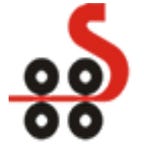Basic Factor About Rolling Mills
First of all we have question in our mind about rolling mills !
What is Rolling Mills?
A simple definition of rolling mill is that, a machine or factory in which metal is rolled into sheets or bars. Rolling is the technique of plastically forming of metal by passing it between rolls. It is the most common casting process, which gives high fabrication and close control of outcome. During the process of rolling metal is subjected to high compressed due to the friction between the roll and the metal surface.
Fundamental about Rolling Mills :
- The basic element of contact between the rolls and the metal is a part of a circle.
- The factor of contact is continued in practice, however, actually it variegated along the arc of contact.
- The metal is considered to deform plastically during rolling.
- The volume of metal is continued before and after rolling, there after volume might decrease a little bit due to close up of pores.
- The momentum of the rolls is constant through out the process.
- The metal is expended in the rolling direction and there is no space in the width of the material.
- The cross sectional part basically to the rolling direction is not perverted.
Major Factors of a Rolling Mill :
- Rolling stand or roll housing - Requires very rigid construction
- Roller table - For material movement in the rolling mill
Descaling device - For removal of scale before rolling - Shears - to cut the steel materials at different stages of rolling
- Guides - They are usually used in long mills for guiding the feed material to the roll groove.
- Work rolls - The rolls which are in contact with the work piece being rolled.
- Back up rolls - they are intended to provide rigid support required by the working rolls to prevent bending under the rolling loads. They are normally used in flat mills.
- Roll bearings and roll chocks.
- Roll balance system - This is to ensure that upper rolls are maintained in proper position relative to lower rolls.
- Roll changing device - This is a special device designed to attach to the neck of the roll to be removed or inserted into the rolling mills.
- Mill protection devices - These are to ensure that the forces applied to the roll chocks are not of such a magnitude to fracture the roll necks or damage the housing.
- Roll cooling and lubrication systems.
- Hydraulic system.
- Pinions - These are gears to divide power between the two spindles, rotating them at the same speed but in the different direction.
- Gearing - This is to establish desired rolling speed.
- Drive motors - They provide power to the rolls and roller conveyors. They should be large enough to supply enough power. The drive motors also controls the speed.
- Electric controls - To control the quality of power to the drive motors and the automation system for the mill.
- Cooling of the rolled products - It is done either by water cooling, air mist cooling or cooling by air on the cooling beds.
- Coilers and uncoilers - These are used for coiling and uncoiling of rolled steel.
- Packing and bundling devices
We at Steefo - Rolling Mill Manufacturer, made wide range of rolling mills through scientifically proved industrial standards and norms. With the vision of offering finest grade rolling mills, We achieved top position in manufacturing and exporting of rolling mills products across the countries instead of this to our globally clients of Bangladesh, Mali, Ghana, Saudi Arabia, Jordan, Qatar, Uganda, Rwanda, Kenya, Mauritius, Zimbabwe, Angola, Ethiopia, Sri Lanka and so on.
For read more about rolling mills click here or call us : + 91 9825805793 / 9824032959
